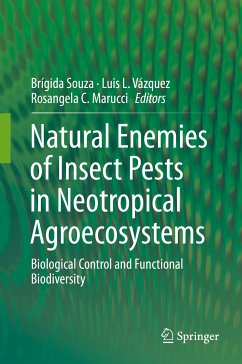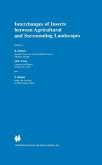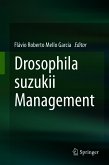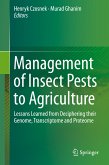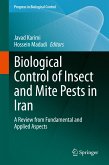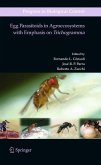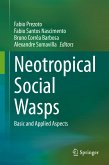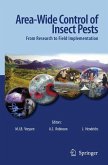Natural Enemies of Insect Pests in Neotropical Agroecosystems (eBook, PDF)
Biological Control and Functional Biodiversity
Redaktion: Souza, Brígida; Marucci, Rosangela C.; Vázquez, Luis L.


Alle Infos zum eBook verschenken

Natural Enemies of Insect Pests in Neotropical Agroecosystems (eBook, PDF)
Biological Control and Functional Biodiversity
Redaktion: Souza, Brígida; Marucci, Rosangela C.; Vázquez, Luis L.
- Format: PDF
- Merkliste
- Auf die Merkliste
- Bewerten Bewerten
- Teilen
- Produkt teilen
- Produkterinnerung
- Produkterinnerung

Hier können Sie sich einloggen

Bitte loggen Sie sich zunächst in Ihr Kundenkonto ein oder registrieren Sie sich bei bücher.de, um das eBook-Abo tolino select nutzen zu können.
This book aims to address the importance of natural enemies and functional diversity for biological control in Neotropical agroecosystems. Several aspects related to the conservation of natural enemies, such as vegetation design and climate change, are discussed in Part 1 and the bioecology of several insects groups used in biological control in Latin America is presented in Part 2. Part 3 is devoted to mass production of natural enemies while Part 4 describes how these insects have been used to control of pests in major crops, forests, pasture, weeds and plant diseases. Lastly, Part 5 reports…mehr
- Geräte: PC
- ohne Kopierschutz
- eBook Hilfe
- Größe: 12.04MB
![Interchanges of Insects between Agricultural and Surrounding Landscapes (eBook, PDF) Interchanges of Insects between Agricultural and Surrounding Landscapes (eBook, PDF)]() Interchanges of Insects between Agricultural and Surrounding Landscapes (eBook, PDF)113,95 €
Interchanges of Insects between Agricultural and Surrounding Landscapes (eBook, PDF)113,95 €![Drosophila suzukii Management (eBook, PDF) Drosophila suzukii Management (eBook, PDF)]() Drosophila suzukii Management (eBook, PDF)121,95 €
Drosophila suzukii Management (eBook, PDF)121,95 €![Management of Insect Pests to Agriculture (eBook, PDF) Management of Insect Pests to Agriculture (eBook, PDF)]() Management of Insect Pests to Agriculture (eBook, PDF)73,95 €
Management of Insect Pests to Agriculture (eBook, PDF)73,95 €![Biological Control of Insect and Mite Pests in Iran (eBook, PDF) Biological Control of Insect and Mite Pests in Iran (eBook, PDF)]() Biological Control of Insect and Mite Pests in Iran (eBook, PDF)73,95 €
Biological Control of Insect and Mite Pests in Iran (eBook, PDF)73,95 €![Egg Parasitoids in Agroecosystems with Emphasis on Trichogramma (eBook, PDF) Egg Parasitoids in Agroecosystems with Emphasis on Trichogramma (eBook, PDF)]() Egg Parasitoids in Agroecosystems with Emphasis on Trichogramma (eBook, PDF)161,95 €
Egg Parasitoids in Agroecosystems with Emphasis on Trichogramma (eBook, PDF)161,95 €![Neotropical Social Wasps (eBook, PDF) Neotropical Social Wasps (eBook, PDF)]() Neotropical Social Wasps (eBook, PDF)121,95 €
Neotropical Social Wasps (eBook, PDF)121,95 €![Area-Wide Control of Insect Pests (eBook, PDF) Area-Wide Control of Insect Pests (eBook, PDF)]() Area-Wide Control of Insect Pests (eBook, PDF)354,95 €
Area-Wide Control of Insect Pests (eBook, PDF)354,95 €-
-
-
Dieser Download kann aus rechtlichen Gründen nur mit Rechnungsadresse in A, B, BG, CY, CZ, D, DK, EW, E, FIN, F, GR, HR, H, IRL, I, LT, L, LR, M, NL, PL, P, R, S, SLO, SK ausgeliefert werden.
- Produktdetails
- Verlag: Springer International Publishing
- Seitenzahl: 546
- Erscheinungstermin: 18. Dezember 2019
- Englisch
- ISBN-13: 9783030247331
- Artikelnr.: 58434050
- Verlag: Springer International Publishing
- Seitenzahl: 546
- Erscheinungstermin: 18. Dezember 2019
- Englisch
- ISBN-13: 9783030247331
- Artikelnr.: 58434050
- Herstellerkennzeichnung Die Herstellerinformationen sind derzeit nicht verfügbar.
